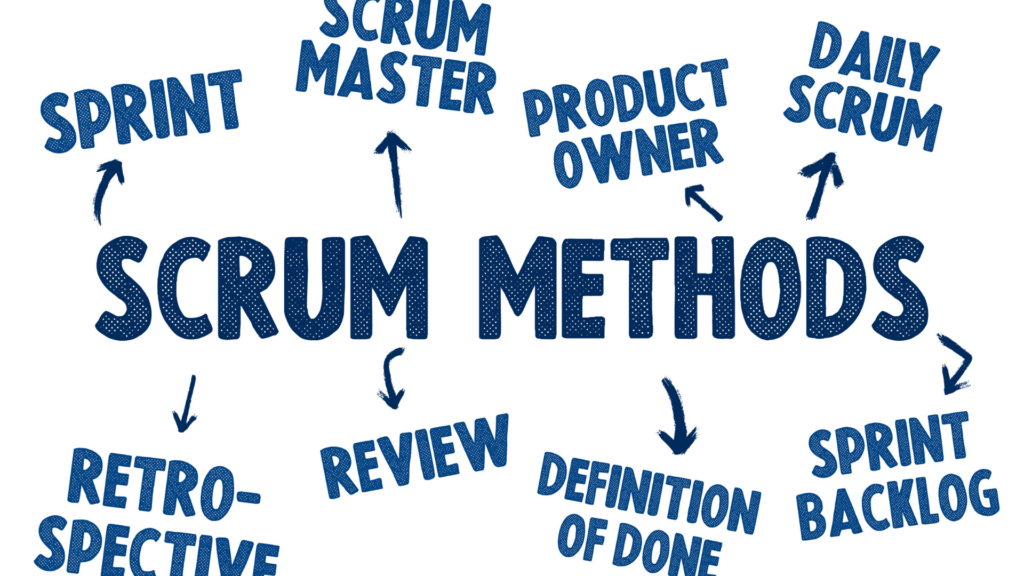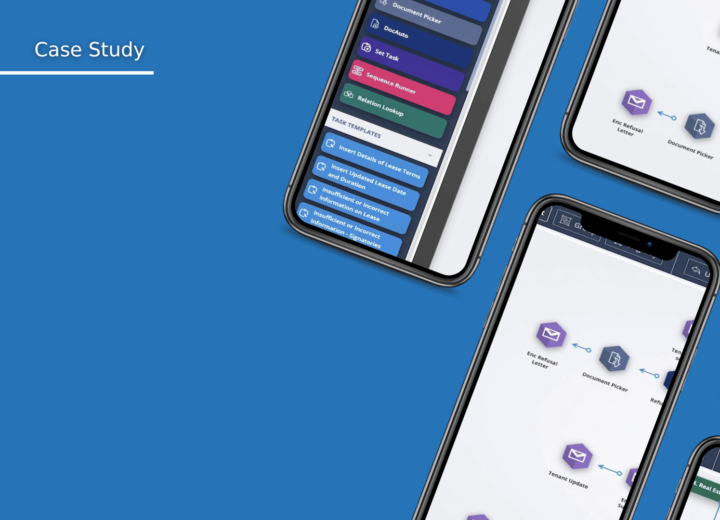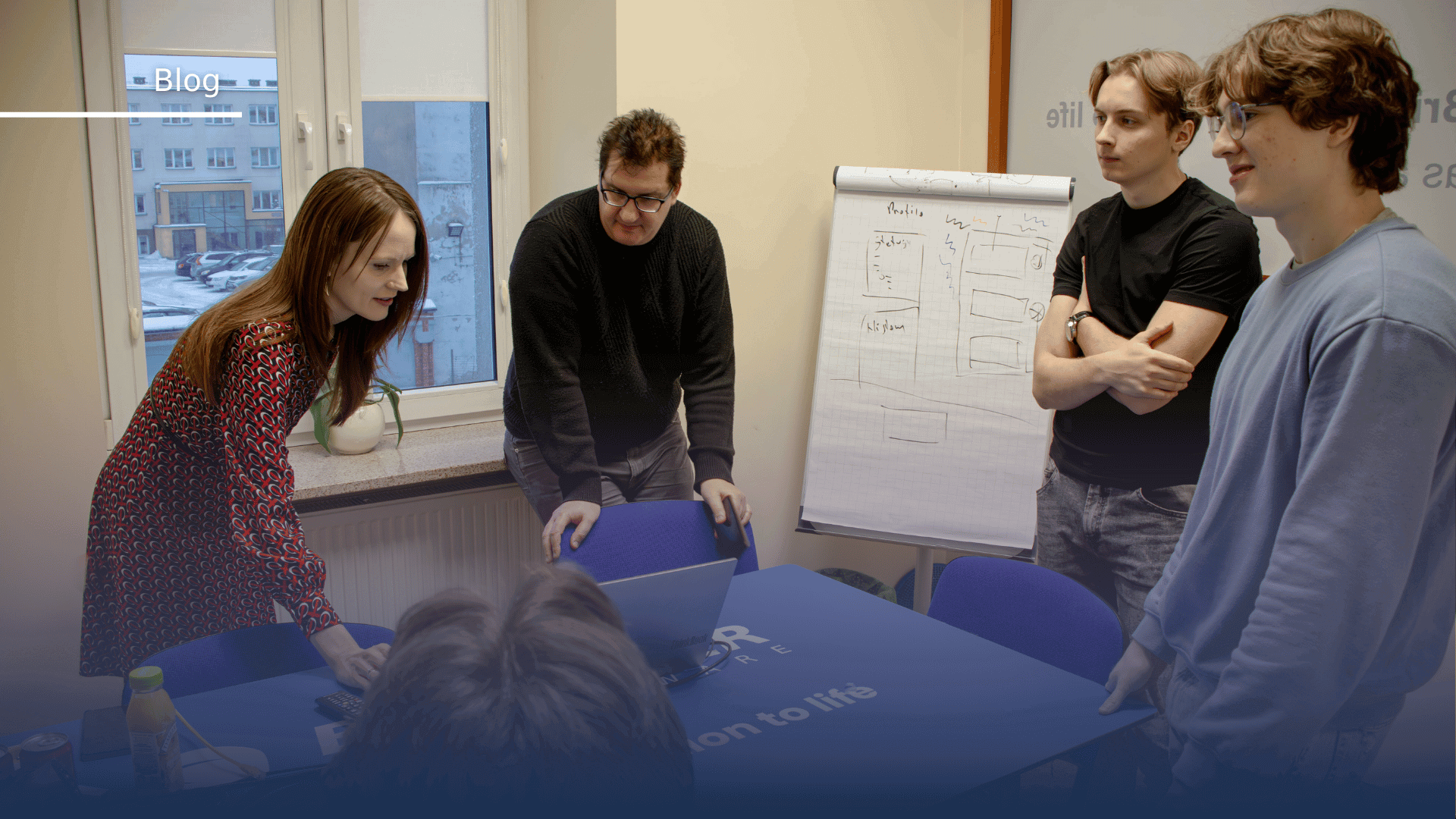Agile in action: How Scrum shapes our software development process
Table of content
ToggleIntroducing Scrum: A framework for Agile project management
In today’s fast-paced business landscape, the ability to adapt quickly and efficiently to changing requirements and priorities is crucial for project success. Scrum is a lightweight, iterative framework for agile project management that has revolutionized the way software development teams work. At its core, Scrum is designed to help teams deliver high-quality products efficiently by breaking down complex projects into manageable chunks called “sprints.”
What exactly is Scrum and how does it develop its strengths in software development? What roles and activities occur in Scrum? What are the advantages and disadvantages of this agile framework? You will learn all this in our article.
The core of SCRUM: roles
At the heart of Scrum are three distinct roles, each with specific responsibilities that contribute to the overall success of the project. Understanding these roles is crucial for implementing Scrum effectively:
- Product Owner, responsibilities and key skills:
- Defines and communicates the product vision
- Manages and prioritizes the product backlog
- Makes decisions on product features and release timings
- Acts as the primary liaison between stakeholders and the development team
- Scrum Master, responsibilities and key skills:
- Facilitates Scrum events and ensures they are productive and time-boxed
- Coaches the team on Scrum practices and principles
- Removes impediments that hinder the team’s progress
- Shields the team from external interruptions and distractions
- Development Team, responsibilities and key skills:
- Self-organizes to accomplish sprint goals
- Collaboratively develops and delivers potentially shippable product increments
- Participates in sprint planning, daily scrums, and retrospectives
- Typically consists of 3-9 members for optimal performance
The synergy between these roles is what makes Scrum powerful. The Product Owner ensures the right product is built, the Scrum Master enables the team to work efficiently, and the Development Team delivers high-quality increments. This structure promotes transparency, inspection, and adaptation – the pillars of empirical process control that underpin Scrum.

Recurring activities that are scheduled as regular appointments
Scrum’s effectiveness lies in its structured, time-boxed events that create a steady rhythm for the development process. These recurring activities, often referred to as Scrum ceremonies, provide the framework for planning, execution, and continuous improvement. Let’s explore these key events:
Sprint Planning
Frequency: At the beginning of each sprint
Duration: Typically 2-4 hours for a two-week sprint
Purpose:
• Define sprint goal and select items from the product backlog
• Break down selected items into tasks
• Estimate effort required for each task
Outcome: A clear sprint backlog and shared understanding of the sprint goal
Daily Scrum (Stand-up)
Frequency: Daily
Duration: 15 minutes
Purpose:
• Synchronize activities and create a plan for the next 24 hours
• Identify impediments
• Promote team collaboration
Key questions addressed:
• What did I do yesterday to help the team meet the sprint goal?
• What will I do today to help the team meet the sprint goal?
• Do I see any impediments that prevent me or the team from meeting the sprint goal?
Sprint Review
Frequency: At the end of each sprint
Duration: Typically 1-2 hours for a two-week sprint
Purpose:
• Demonstrate completed work to stakeholders
• Gather feedback on the increment
• Discuss progress towards the product goal
Outcome: Adjusted product backlog based on feedback and new insights
Sprint Retrospective
Frequency: After the sprint review and before the next sprint planning
Duration: Typically 1-1.5 hours for a two-week sprint
Purpose:
• Reflect on the past sprint in terms of people, processes, and tools
• Identify what went well and areas for improvement
• Create a plan for implementing improvements
Outcome: Actionable improvements to be implemented in the next sprint
Backlog Refinement
Frequency: Ongoing, often weekly
Duration: No more than 10% of the team’s capacity
Purpose:
• Review and update product backlog items
• Ensure items are well-defined, estimated, and prioritized
• Break down larger items into smaller, more manageable pieces
Outcome: A well-maintained and prioritized product backlog
These recurring activities create a predictable cadence that allows teams to plan effectively, adapt quickly, and continuously improve their processes. By adhering to this schedule, Scrum teams can maintain focus, increase transparency, and deliver value consistently sprint after sprint.
How Scrum boosts team productivity
Scrum isn’t just about project flexibility, it’s a productivity powerhouse for teams. By breaking down large projects into bite-sized sprints, Scrum fosters laser focus. Teams tackle a manageable set of prioritized tasks, eliminating the overwhelm of sprawling to-do lists. Daily stand-up meetings keep everyone on the same page, fostering collaboration and identifying roadblocks early. This continuous communication minimizes wasted time and ensures everyone is aligned towards the sprint goal. Scrum also empowers teams through self-organization. Without micromanagement, teams become accountable for their work, boosting morale and ownership. This combination of focused effort, clear communication, and empowered teams creates an environment ripe for peak productivity.

Fostering team engagement with Scrum
Scrum has dramatically improved team engagement in our organization through several key mechanisms. Self-organizing teams empower members to make decisions, increasing their sense of ownership and allowing them to leverage their strengths. Regular feedback loops, such as sprint reviews and retrospectives, provide immediate recognition and enable continuous improvement, while daily stand-ups ensure everyone’s voice is heard.
Collaboration is enhanced through cross-functional teams that broaden skills and perspectives. Shared sprint goals foster unity. Scrum’s emphasis on transparency, with visible progress through boards and charts, clear priorities via well-maintained backlogs, and open communication, keeps everyone informed and involved.
At BlueRider we’ve seen a increase in employee engagement scores, decrease in team turnover, and a increase in innovation and new ideas. While implementing Scrum initially faced some resistance, the benefits to team morale, productivity, and overall engagement have been substantial. By promoting autonomy, collaboration, and continuous improvement, Scrum has created a more motivated and invested workforce.
One of the most significant advantages we’ve experienced with Scrum is its ability to foster high levels of team engagement. This methodology has transformed how our teams interact, collaborate, and take ownership of their work.
Since implementing Scrum, at BlueRider.Software we’ve observed a increase in reported job satisfaction, higher levels of innovation, with team members more likely to propose and implement new ideas. Stronger team bonds, resulting in more effective collaboration even outside of project work.
Benefits and challenges of Scrum
Scrum offers numerous benefits that have transformed our software development process. One of the primary advantages is increased product quality, as the iterative approach allows for continuous testing and refinement. This methodology also enhances customer satisfaction by enabling frequent delivery of working software and quick adaptation to changing requirements. Project predictability improves significantly with Scrum, thanks to short sprints and clear metrics like velocity and burndown charts.
Another notable benefit is the reduced time-to-market. By prioritizing high-value features and allowing for parallel development and testing, we can deliver products faster than ever before. Team collaboration sees a marked improvement as well, with daily stand-ups and cross-functional teams promoting better communication and skill sharing.
However, implementing Scrum is not without its challenges. One of the main hurdles we faced was resistance to change. Moving from traditional methodologies to Scrum required a significant shift in mindset for both team members and stakeholders. It took time and patience to overcome this initial resistance and fully embrace the Scrum framework.
Another challenge was maintaining consistency in sprint velocities. As teams adjusted to the new way of working, we saw fluctuations in productivity that made long-term planning difficult at first. It took several sprints for teams to find their rhythm and for velocity to stabilize.
Through persistent effort and continuous improvement, we’ve been able to overcome every hurdles and realize the full potential of Scrum in our organization.
By embracing Scrum, we’ve not only improved our software development proces but also fostered a more adaptive, collaborative, and customer-focused organizational culture. These benefits have translated into tangible improvements in our product quality, market responsiveness, and overall business performance.
Is Scrum right for your team?
After exploring the numerous benefits and challenges of implementing Scrum in our software development process, it’s natural to ask: Is Scrum the right choice for your team? While our experience with Scrum has been positive, it’s important to recognize that every organization is unique.
In our experience, the benefits of Scrum – increased transparency, faster time-to-market, improved quality, and higher team engagement – have far outweighed the challenges of implementation. However, it’s crucial to approach Scrum with an open mind and be prepared to adapt it to your specific context.
If you decide to implement Scrum, remember that it’s a journey of continuous improvement. It may take time to see the full benefits, and you’ll likely need to refine your processes along the way. But with commitment and patience, Scrum can transform not just your development process, but your entire organizational culture.
Ultimately, the decision to adopt Scrum should be based on a careful evaluation of your team’s needs, your organizational structure, and your project requirements. If you value flexibility, continuous improvement, and customer-centric development, Scrum could be the key to unlocking your team’s full potential.









